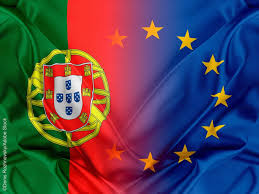Portugal receives more from EU than it pays in

The European Union (EU) sends more money to Portugal than the country has to transfer to Brussels, in the form of national contributions, which has helped external accounts.
Between 1996 and 2024, the balance of flows with Brussels totalled, on average, 1.6% of the Gross Domestic Product (GDP), according to data released by the Bank of Portugal (BdP) and reported by ECO.
In 2024, the current and capital account balance was 9,344 million euros, corresponding to 3.3% of GDP, of which 3,702 million euros (1.3%) corresponded to the contribution of flows with the European Union.
“During the pandemic period, particularly in 2020 and 2021, flows with the European Union were decisive for the positive balances of the current and capital accounts, since the other components of these balances presented negative balances”, points out the institution led by Mário Centeno. The average has been decreasing, having gone from 2.1% between 1996 and 2005 to 1.5% between 2006 and 2015 and 1.1% between 2016 and 2024.
In 2024, the total amount of subsidies allocated to Portugal amounted to 2,447 million euros, corresponding to 0.9% of GDP. The value is also the average between 1996 and 2024, a period during which it fluctuated between 0.5% and 1.2% of GDP.
The Bank of Portugal also points out that the amount allocated to final beneficiaries residing in Portugal of European funds in the form of current international cooperation was 663 million euros, or 0.2% of GDP. The institution highlights that “the highest value, verified in 2021, of 2087 million euros (1.0% of GDP), occurred due to the allocation of community funds under the Apoiar program (financed by the ERDF), an instrument to support the treasury of companies in the sectors most affected by the Covid-19 pandemic”.
Allocations recorded in the secondary income account have represented, on average, 0.3% of GDP since 1996. The regulator highlights that the allocation of EU funds can also be recorded in the capital account, under the heading of investment aid, as is the case with the amounts allocated under the Cohesion Fund and the Recovery and Resilience Plan (RRP), as well as the Horizon 2020 and Horizon Europe programmes.
In 2024, the funds allocated to final beneficiaries registered as investment aid totalled €2,990 million, corresponding to 1.1% of GDP. The Bank of Portugal highlights that “there has been a downward trend in the allocation of funds registered as investment aid since 1996”, with these representing, on average, 1.9% of GDP between 1996 and 2005 and 1.4% between 2006 and 2015, but only 1.0% between 2016 and 2024.
On the other hand, with regard to Portugal’s payments to the EU, the country’s financial contribution to the community budget stands out, as well as the customs duties and agricultural levies charged on imports of goods from non-EU countries, which are revenue for the EU, notes the Bank of Portugal.
In 2024, Portugal transferred 2,428 million euros, or 0.9% of GDP, to the EU, of which 2,059 million euros corresponded to the financial contribution to the bloc’s budget.
“Portuguese transfers to the European Union have remained relatively constant since the beginning of the statistical series, in 1996, with an average of 1.0% of GDP and values between 0.8% and 1.2% of GDP”, says the entity led by Mário Centeno.





